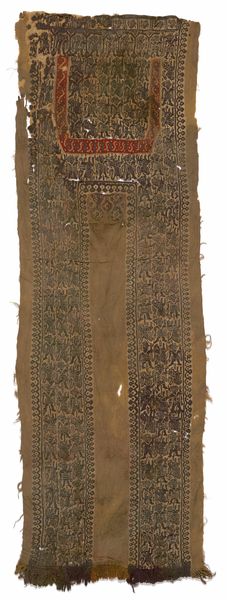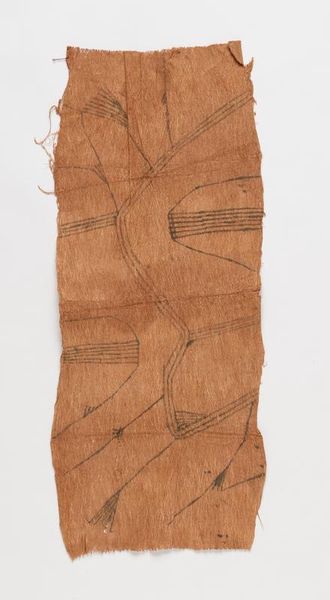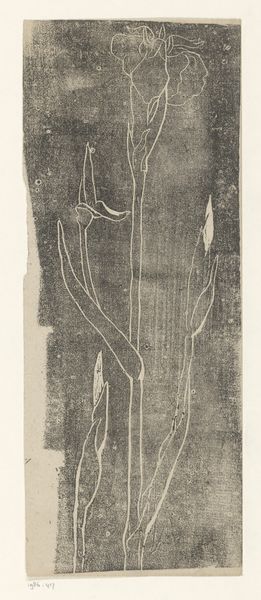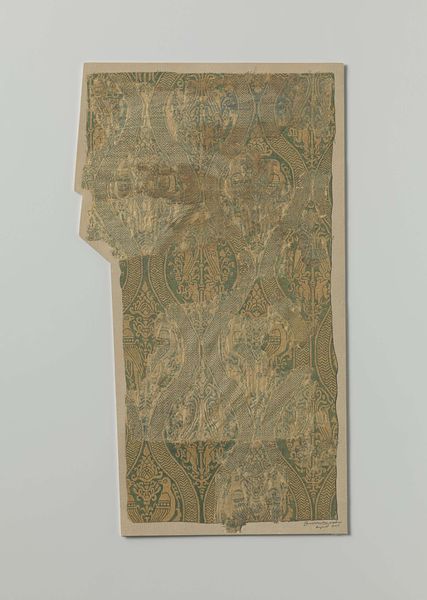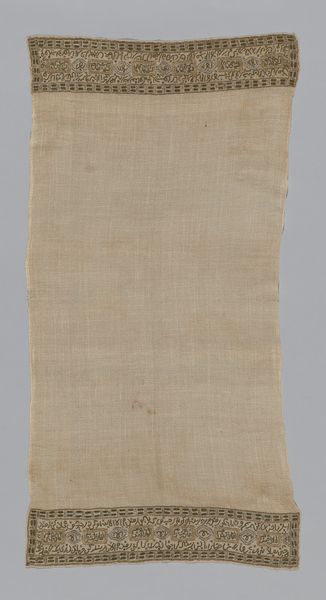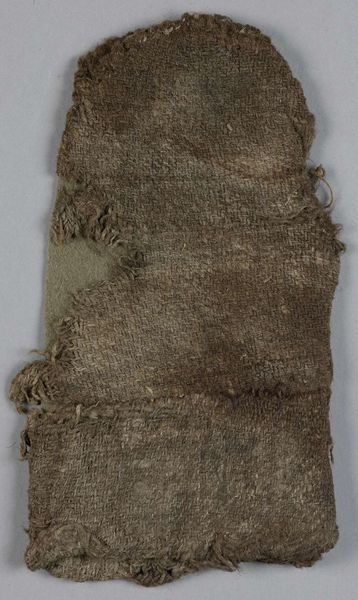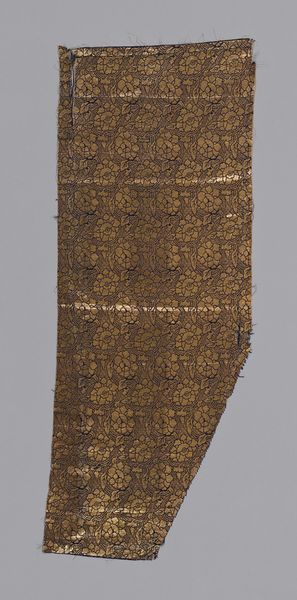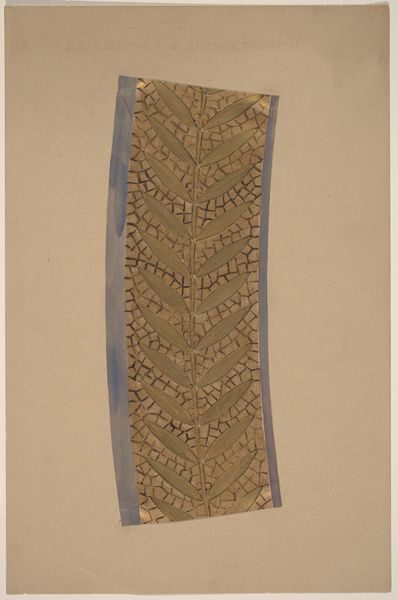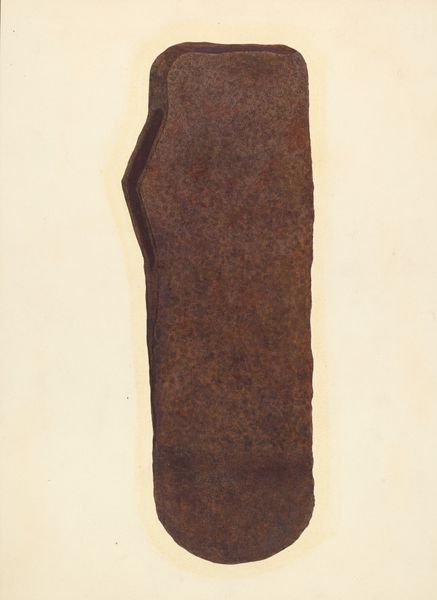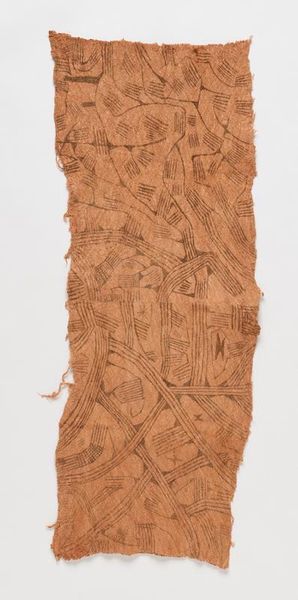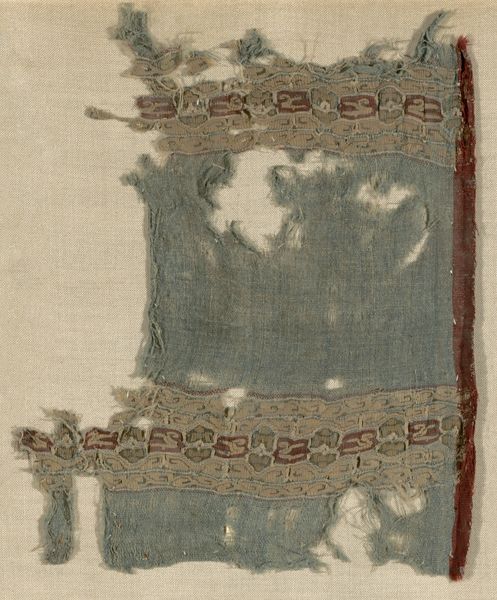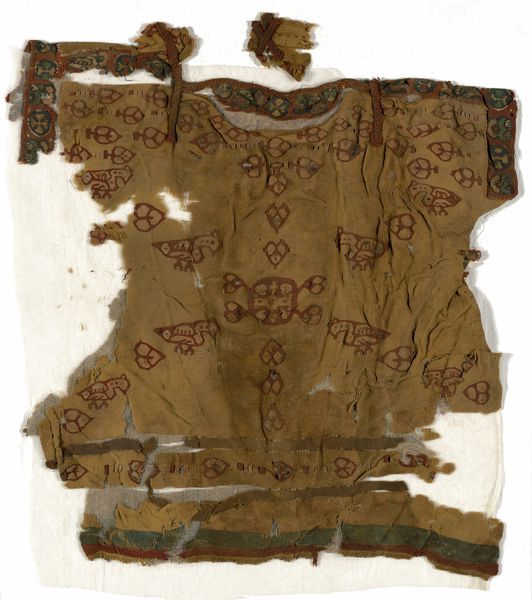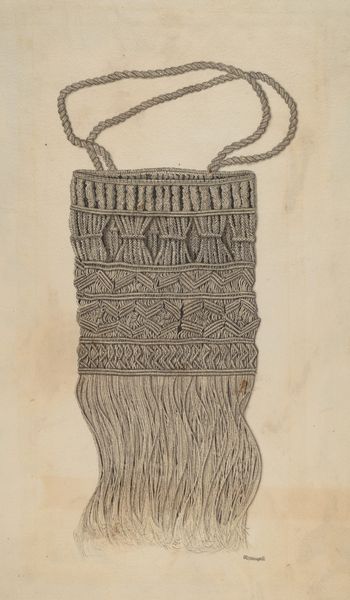
Child's Tunic Roman period (30 B.C.– 641 A.D.)/Arab period (641–969), 7th century
0:00
0:00
fibre-art, weaving, textile
#
fibre-art
#
medieval
#
weaving
#
textile
#
ancient-egyptian-art
#
egypt
#
costume
Dimensions: 50.8 × 34.3 cm (20 × 13 1/2 in.)
Copyright: Public Domain
This child’s tunic was woven, likely in Egypt, by a Coptic artisan. The material is undyed linen, a readily available and relatively inexpensive textile in the ancient world. The tunic’s form is simple. It's made from a single piece of cloth, folded and seamed at the sides, with openings left for the arms. You can see the weaver’s care in the details: the evenness of the weave, the reinforced bands at the shoulders, and the decorative fringe. Although humble, this was not a garment quickly made. Consider the labor invested in its production, from the cultivation of flax, to the spinning of fibers into thread, to the slow work at the loom. Before industrialization, cloth production was one of the most widespread forms of work, performed by both women and men. Everyday objects like this tunic invite us to consider the lives and labor of those who made them, reflecting on the social and economic contexts that shape even the simplest of garments.
Comments
No comments
Be the first to comment and join the conversation on the ultimate creative platform.
